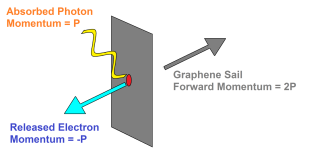Infrared radiation detectors are a critical component for DoD imaging systems used in areas such as military vehicles, military night vision, military communication, environmental monitoring, and target acquisition. In addition, they are crucial for commercial markets including surveillance, digital cameras, automotive and scientific research.
Common constraints for IR sensors are the persistence and size of conventional detectors. State-of-the-art sensors drain battery power continuously regardless of the presence of the target signal, which leads to short sensor lifetime and frequent battery replacement. The Department of Defense has an unfilled need for persistent, event-driven sensing capabilities, where physical, electromagnetic and other sensors can remain dormant, with near zero-power consumption, until awakened by an external trigger or stimulus. Current state-of-the-art sensors use active electronics to monitor the environment for the external trigger, consuming power continuously and limiting the sensor lifetime to months or less.
DARPA earlier developed technologies under the N-ZERO program extending the lifetime of remotely deployed communications and environmental sensors from months to years, by continuously and passively monitor the environment, waking an electronic circuit only upon the detection of a specific trigger signature. Specifically, N-ZERO sought to extend unattended sensor lifetime from weeks to years, cut costs of maintenance, and the need for redeployments. Alternatively, N-ZERO could also reduce battery size for a typical ground-based sensor by a factor of 20 or more while still keeping its current operational lifetime.
A team of researchers at Northeastern University have developed a new sensor powered by the very infrared energy it’s designed to detect. The device, which was commissioned as part of DARPA’s Near Zero Power RF and Sensor Operation (N-ZERO) program, consumes zero standby power until it senses infrared (IR) wavelengths. The sensor shall have many military applications that can detect vehicles and tanks and even identify them weather it is a truck, a car, or an aircraft by detecting heat emitted by them in IR spectra and analysing the heat or IR signature which is different because of engines that burn gasoline or diesel fuels produce emissions made up of different chemical compounds.
Conventional infrared sensors are also bulky. For instance, conventional pyroelectric IR sensor-based motion detectors require a bulky Fresnel lens for their normal operation.
Now DARPA launched SBIR in Sep 2022 to develop a standalone wireless sensor node for infrared radiation (IR) detection of personnel at operationally relevant ranges (>3 m) with extremely small form factor (i.e., <2 cm3) and unprecedented persistence (>5 yr). DARPA P-IR SBIR intends to develop persistently aware, miniaturized, wireless IR signature detectors with unprecedented longevity for personnel detection given insight into low-power sensor technologies developed in DARPA’s Near Zero Power RF and Sensor Operations (N-ZERO) program.
Phase I will produce a breadboard design that combines at least one IR switch sensor with a wireless module, load-switch, and battery unit. The following performance should be demonstrated, at minimum, in a laboratory
environment:
 International Defense Security & Technology Your trusted Source for News, Research and Analysis
International Defense Security & Technology Your trusted Source for News, Research and Analysis

